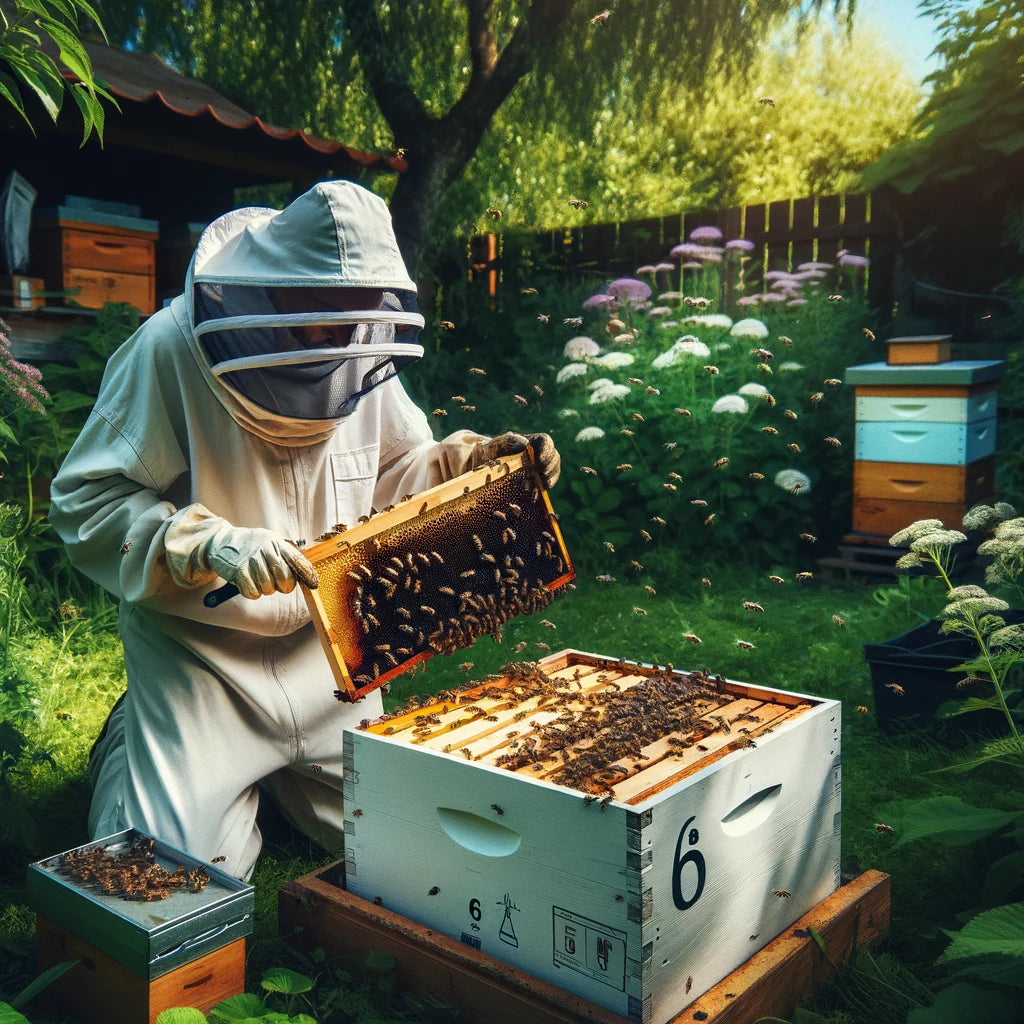
The Comprehensive Beekeeper's Guide: Essential Tools and Equipment for Success
Introduction
Welcome to the world of beekeeping, where the harmony of nature meets human ingenuity. This guide is crafted to be the ultimate resource for beekeepers, combining insights from various expert sources and filling in gaps often overlooked. Our aim is to provide a guide that resonates with the beekeeping community, building trust through shared knowledge and experience.
Chapter 1: Setting Up Your Apiary
- Choosing the Right Hive: Explore different hive types, including Langstroth, Top Bar, and Warre hives. Understand the pros and cons of each to make an informed decision based on your beekeeping goals and local environment.
- Hive Location: Learn how to select the ideal location for your hives, considering factors like sun exposure, wind protection, and proximity to water and foraging sources.
Chapter 2: Essential Beekeeping Tools
- The Beekeeper's Toolkit: A comprehensive list of must-have tools, including hive tools, smokers, and frame lifters. Understand the importance of each tool and how to use them effectively.
- Protective Gear: Detailed recommendations for choosing the right bee suit, gloves, and footwear to ensure safety and comfort while working with your bees.
Chapter 3: Hive Management Essentials
- Frames and Foundations: Dive into the world of frames and foundations. Learn about the benefits of using pre-made foundations and how they can save time and effort for your bees, leading to increased honey production.
- Feeding Your Bees: Understand when and how to feed your bees. Explore different feeder types, including entrance and top feeders, and learn how to make your own sugar syrup.

Chapter 4: Advanced Beekeeping Equipment
- Honey Extractors: A guide to choosing the right honey extractor based on your hive scale and honey production goals. Learn about manual and electric extractors and the pros and cons of each.
- Queen Rearing Supplies: For those interested in breeding, learn about queen catchers, marking tools, and other equipment necessary for successful queen rearing.
Chapter 5: Seasonal Beekeeping Considerations
- Winter Preparation: Tips on how to prepare your hives for winter, including insulation techniques and winter feeding strategies.
- Summer Maintenance: Learn about swarm control, hive ventilation, and pest management to keep your hives healthy during the warmer months.
Chapter 6: Harvesting and Processing
- Harvesting Honey: Step-by-step guide on ethical and sustainable honey harvesting. Learn how to use uncapping forks, knives, and the extraction process.
- Processing Beeswax: Discover how to render beeswax and its various uses, from candles to cosmetics.
Chapter 7: Overcoming Challenges
- Pest and Disease Management: Comprehensive strategies for dealing with common pests and diseases, including varroa mites and American foulbrood. Learn about organic treatment options and integrated pest management techniques.
- Hive Inspection Best Practices: Tips for conducting thorough hive inspections, identifying potential issues, and taking corrective actions.
Conclusion
This guide aims to be an indispensable resource for both novice and experienced beekeepers. By combining expert advice with practical tips and advanced knowledge, we hope to empower you on your beekeeping journey, ensuring success and enjoyment in this fascinating endeavor.
FAQ About Essential Tools& Equipment
What are the benefits of using a Top Bar hive compared to a Langstroth hive?
Top Bar hives are simpler to construct and manage, requiring less equipment. They are often preferred for small-scale or backyard beekeeping and are more natural for bees as they allow for natural comb building.
How do I choose the best location for my apiary in an urban environment?
In an urban environment, select a location that provides sun exposure, protection from strong winds, and is away from high-traffic areas to avoid disturbing the bees and neighbors. Ensure there are nearby water sources and diverse foraging plants. Rooftops and backyards can be suitable if they meet these criteria.
What should I do if I accidentally damage a frame during an inspection?
If a frame is damaged, carefully remove it from the hive to prevent further harm to the bees. If possible, repair the frame or replace it with a new one. Ensure the bees have enough space and support to rebuild any lost comb.
Can I harvest honey from my hive in the first year of beekeeping?
It is generally recommended to avoid harvesting honey in the first year. Allowing bees to build up their colony and stores ensures they have enough resources to survive the winter. Harvesting too early can weaken the colony and reduce their chances of survival.



Leave a comment